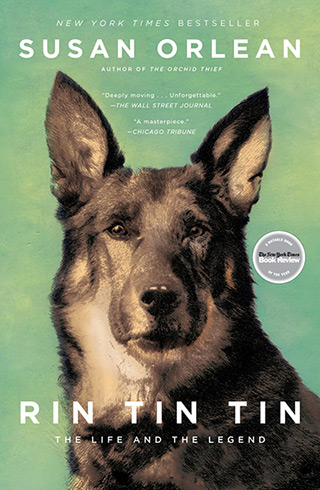 In preparation for Iceland Writers Retreat, I am reading books by each of the featured authors. I placed holds on everything I could find at the library. Most of the books came all at once, but I’m still waiting for a few. While I’m waiting, Susan Orlean’s latest book, Rin Tin Tin, was next in the pile.
In preparation for Iceland Writers Retreat, I am reading books by each of the featured authors. I placed holds on everything I could find at the library. Most of the books came all at once, but I’m still waiting for a few. While I’m waiting, Susan Orlean’s latest book, Rin Tin Tin, was next in the pile.
A Dog’s Life
I have no particular connection to the story of Rin Tin Tin, but until my coworkers raised their eyebrows when I told them what I was reading, it didn’t occur to me that there was anything unusual about a biography of a dog. I’ve already read A Dog’s History of America and countless memoirs of life with a dog (Jon Katz’s border collie stories are personal favorites). I have a shelf dedicated to training manuals.
Of course, Susan Orlean would never simply relate the events of a particular dog’s life; all of her stories explore beyond the boundaries of the nominal subject. She sends exploratory tendrils into all manner of related topics, so that Rin Tin Tin is also a biography of the dog’s owner, Lee Duncan; a history of the dog’s legacy and symbolic importance in American culture; and a biography of the TV producer who revived the dog’s legacy in the 50s. It’s a history of the evolution of the relationship between humans and dogs in the twentieth century; a history of animals’ involvement in film and a history of their use in war. And it’s an essay on Orlean’s own relationship to dogs in general and the Rin Tin Tin story in particular.
As all of Orlean’s stories, even the stubby side-tracks of Rin Tin Tin are exhaustively researched (she read the records of dogs donated to serve in WWII) yet that data is presented as curious anecdote (she tracked down a surviving donor and talked with him about giving up his pet dog to the war effort when he was a kid). Despite copious information about various and sundry tangential topics, the central narrative of Lee Duncan’s lifelong dedication to his dog keeps the book from becoming too diffuse.
Lee Duncan
To many people, Duncan’s focus on his dogs at the expense of even family relationships would seem pathological. Several times in the book, Orlean mentions the laser-like focus a dog pays to its trainer, the way Rinty’s eyes fixed on Duncan when they were performing. If you’ve been on the receiving end of that kind of canine attention, you can understand how Duncan felt he was only holding up his end of the relationship. You could tell Orlean was touched by that connection as well.
Unclosed Circle, Unmade Movie
Toward the end of the book, she starts to go in circles a little bit, like a dog getting ready to lie down, or like she wasn’t quite ready to let go. She ends with a description of a scene in a script for a movie about the real life Rin Tin Tin. The scene includes the dog, the trainer, and the producer
All of them in a movie together, in a story about a movie, the endless circle that the Rin Tin Tin story always managed to be. In this rendering, everyone is happy, everything is, at last, complete.
That movie was never made. The scene described in the script is kind of cheesy, like the stock boxing picture ending the studio executives want in Barton Fink. But I still got kind of choked up reading it. Lee Duncan made dozens of movies with his dog, but the one he really wanted to make was the story about how the dog rescued him. The producer Bert Leonard also fell in love with that story, and spent most of his life trying to get the movie made. I got the feeling that Orlean, too, wanted to see that movie; that she maybe hoped her book would be the basis for a film adaptation that would finally make the movie Lee Duncan cared about most. And why not? If a story about a flower can be a movie, a dog doesn’t seem like such a stretch.





About the author